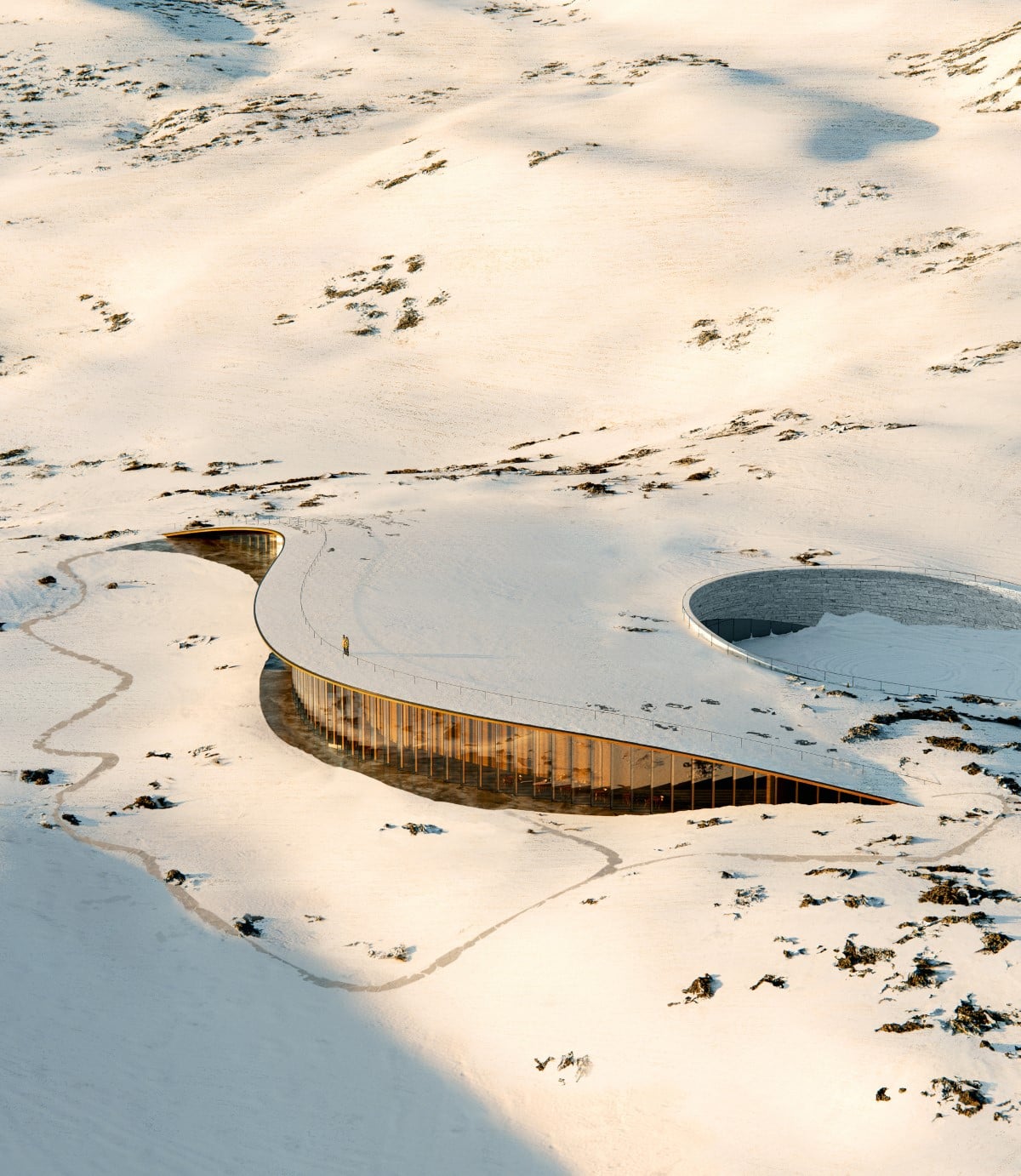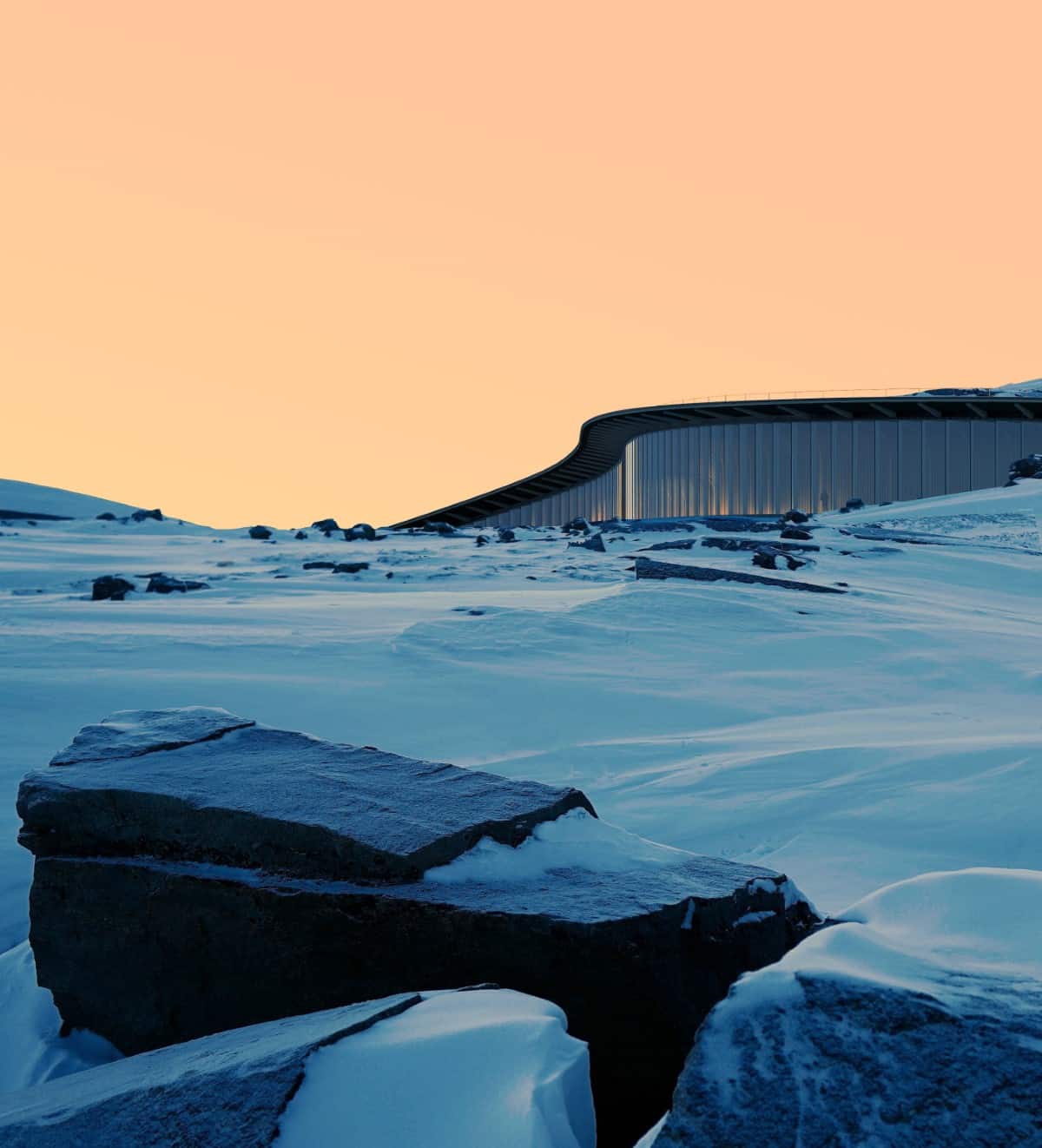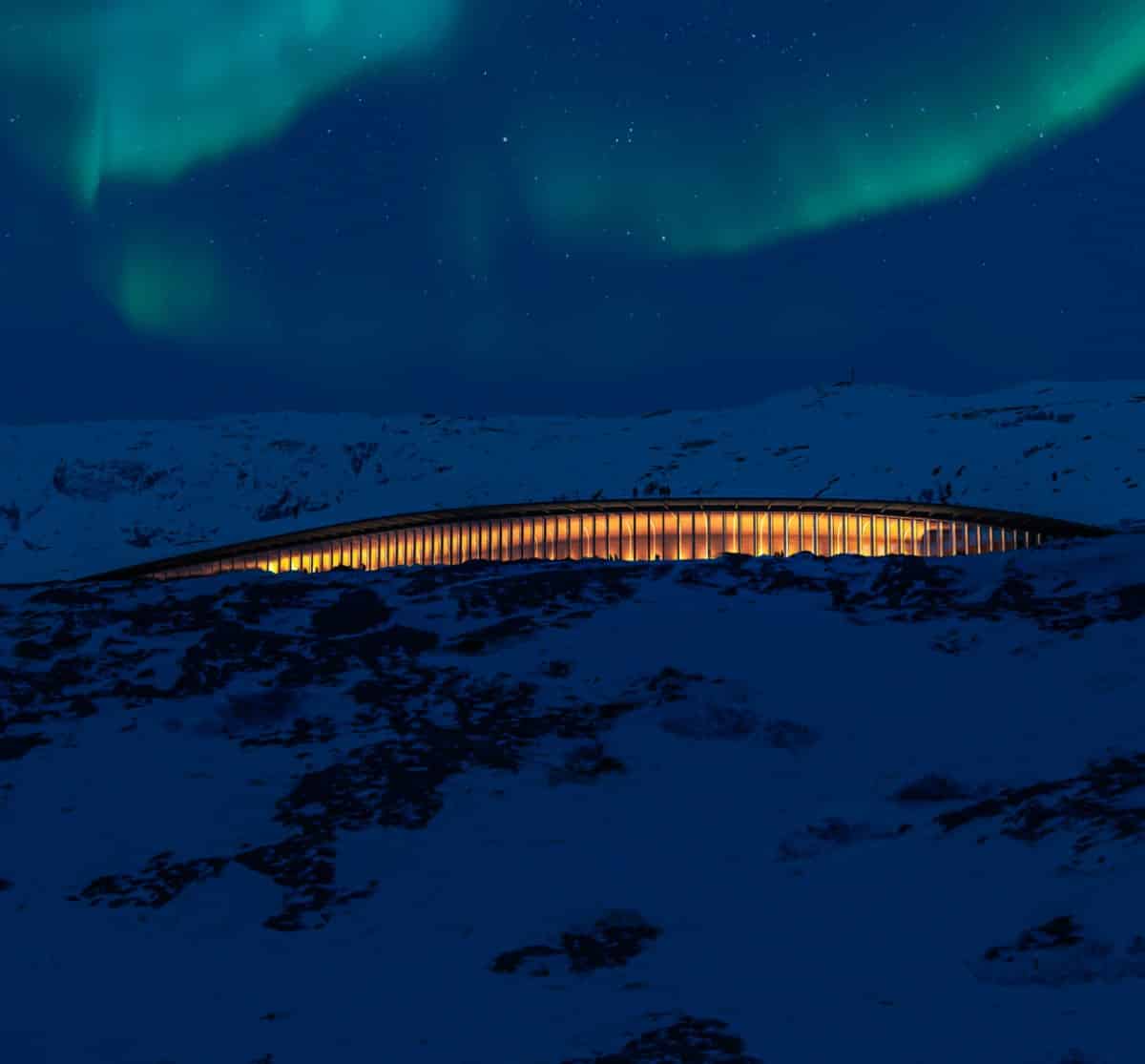
Image: MIR
In 1993, Nunavut Agreement gave the Inuit a large swath of land in Canada’s largest Aboriginal land claim settlement. After 30 years, a heritage center honoring Inuit culture is finally taking shape. While the agreement had always called for a heritage center, it’s only now that this important space to preserve artifacts and traditions is moving forward. In an exciting development, the Danish architecture studio Dorte Mandrup won the international competition to design the center.
The firm was selected due to its ability to take inspiration from Inuit culture and the natural environment. In fact, the design recalls the manner in which snowdrifts are shaped by wind. These stunning patterns, called kalutoqaniq in Inuit, have long been a natural wayfinding system for the Indigenous people inhabiting the area. By incorporating the concept into the design, Dorte Mandrup has created a structure that pays homage to the Inuit and, at the same time, blends effortlessly into the environment.
The Inuit Heritage Centre will be situated on the northern of Iqaluit—the capital of the Nunavut territory. According to an official statement, it’s designed to “promote greater awareness of Inuit culture and support cultural healing and reconciliation between Inuit and non-Inuit by offering a place where Inuit can reconnect with their collective past through objects, stories, and activities.”
“Working within this context requires both extreme sensitivity and consideration of landscape and its cultural significance,” shared the firm’s founder and creative director, Dorte Mandrup. “The community has been working tirelessly for a long time to establish a place for Inuit to collect precious heritage and share unique, specialized knowledge that remains imperative for future generations and is in severe risk of vanishing. We are looking very much forward to listen, learn, and be the link between thought and form.”
The hope is that the center will not only promote local heritage but will foster a network of heritage centers across Nunavut in an effort to reconnect Inuit with their heritage. This is particularly important as many Inuit artifacts have long been held in the southern part of Canada until a suitable center was built in Nunavut. The realization of the Inuit Heritage Centre will be a homecoming of sorts for these items, allowing a new generation to connect with their roots.
Dorte Mandrup’s design provides ample space to exhibit these materials, thanks to a roof covered with turf and rock. This allows the center to seamlessly blend into the environment while also using the protective stone to form a shelter that naturally embraces the sensitive collections and exhibits beneath. From above, the roof will also offer a gathering place for visitors to take in unencumbered views of the vast tundra.
As a community gathering place, the Inuit Cultural Heritage Centre will not only include exhibition spaces. There will also be a cafe, workshop area, conservations lab, shop, daycare center, hostel, and offices. Additionally, a large outdoor area will offer spaces for traditional practices such as carving, kayak building, tool making, and berry picking. Set for completion in 2027, the Inuit Culture Heritage Centre will have an enormous impact on Nunavut.
Dorte Mandrup has won the international contest to design the Inuit Cultural Heritage Centre in Nunavut.

Image: MIR
The design blends seamlessly with the environment and includes a rock and turf-covered roof.

Image: MIR

Image: MIR
The space, which will open in 2027, will “promote greater awareness of Inuit culture and support cultural healing and reconciliation between Inuit and non-Inuit.”

Image: Dorte Mandrup
